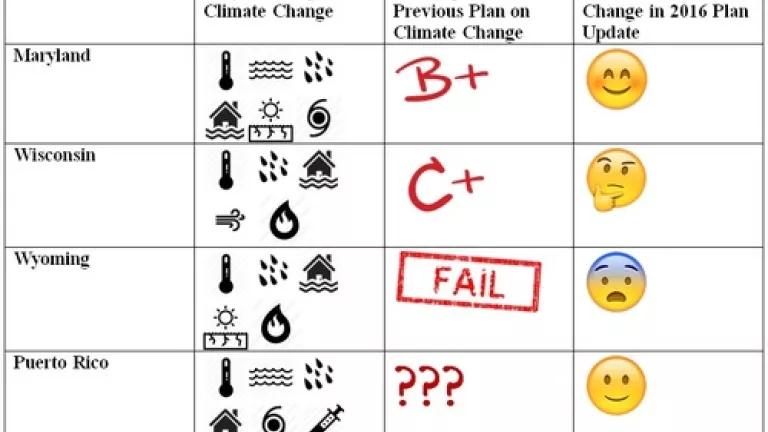Disaster Plan Updates in 2016: A Critical Opportunity for Climate Change Resilience in Maryland, Wisconsin, Wyoming, and Puerto Rico (Part 1 of 5)

As 2016 kicks off, it's a good time to reflect on the accomplishments of the past year, while also anticipating a preview of what the coming year will bring.
We certainly had some big victories to celebrate in 2015. In Paris, the world reached a historic agreement to limit the carbon pollution that is driving global climate change. And closer to home, the Federal Emergency Management Agency (FEMA) adopted a new policy last spring - thanks in part to the efforts of NRDC and our allies - that will help our nation prepare for the impacts of climate change that are coming down the pipeline, even if we cut our greenhouse gas emissions moving forward.
This new policy, which goes into effect early next year, requires states to take account of climate change projections in their natural disaster preparedness plans, known as State Hazard Mitigation Plans. As we've been saying for the past several years, integrating climate change into these plans is a huge opportunity for states to take stock of what the future holds, strengthen their resilience-building strategies, and take advantage of federal grant funds to implement projects that will keep people safe.
States update their hazard mitigation plans on a rolling basis every five years. Four jurisdictions - Maryland, Wisconsin, Wyoming, and Puerto Rico - are required to submit plan updates in 2016, and therefore they'll be the first to develop plans under the new policy.
Critically, approval of a state's hazard mitigation plan by FEMA makes the state eligible for federal grants that can be used on pre-disaster preparedness projects - things like strengthening bridges, moving structures out of the floodplain, and upgrading storm drain systems - that make people and property safer. Over the last 25 years, over $8.5 billion in federal grants have been distributed to states through these programs. If a state fails to develop an approvable plan under FEMA guidelines, it could be putting its future grant eligibility at risk.
This week we're going to check in with these jurisdictions - one each day, starting with Maryland tomorrow - to find out what climate impacts they should be considering as they assess their risk of future natural disasters, and what we might expect them to include in their 2016 plans based on their previous actions and policy statements.
In the meantime, here's a little preview of our assessments (click to view larger):
Check back with us tomorrow (and the rest of this week) for all the details.




